 Search by Keyword
Sign Up Below for our MONTHLY BEATLES TRIVIA QUIZ!
|
“GOOD MORNING GOOD MORNING”
(John Lennon – Paul McCartney)
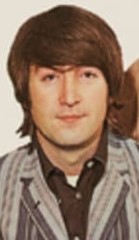 The hectic pace of 1964 and 1965 left The Beatles desiring and acquiring a somewhat more relaxed schedule for 1966. Without a movie to film that year, and only one album to record (instead of the customary two albums), the group was allowed to enjoy a lengthy period to take in the emerging and evolving London scene and even to delve into Eastern concepts and music amidst their less grueling tours. However, because of the backlash that resulted from John’s misunderstood “more popular than Jesus” quote, as well as the Philippines fiasco during their brief world tour, they took it upon themselves to insist on never touring again, leaving them even more free time for 1967. Finally a time to just live life! The hectic pace of 1964 and 1965 left The Beatles desiring and acquiring a somewhat more relaxed schedule for 1966. Without a movie to film that year, and only one album to record (instead of the customary two albums), the group was allowed to enjoy a lengthy period to take in the emerging and evolving London scene and even to delve into Eastern concepts and music amidst their less grueling tours. However, because of the backlash that resulted from John’s misunderstood “more popular than Jesus” quote, as well as the Philippines fiasco during their brief world tour, they took it upon themselves to insist on never touring again, leaving them even more free time for 1967. Finally a time to just live life!
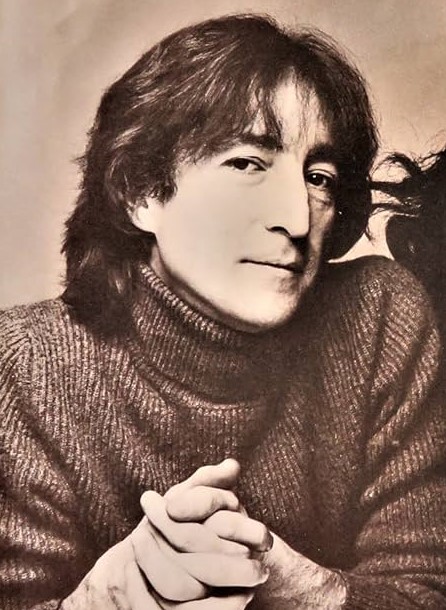 “I didn’t know what to do,” Lennon recalled in 1980. “What do you do when you don’t tour? There’s no life. What the hell do you do all day?...I was thinking, ‘Well, this is like the end, really. If there is no more touring, that means there is going to be a blank space in the future.’” This "blank space" may have been what they all wanted, but once the band got it, John entered into a period of non-motivation that affected everything – even his songwriting. “I didn’t know what to do,” Lennon recalled in 1980. “What do you do when you don’t tour? There’s no life. What the hell do you do all day?...I was thinking, ‘Well, this is like the end, really. If there is no more touring, that means there is going to be a blank space in the future.’” This "blank space" may have been what they all wanted, but once the band got it, John entered into a period of non-motivation that affected everything – even his songwriting.
 And since his songwriting had become more introspective by that time, it was quite natural for Lennon to write about his current feelings. Therefore, a song which begins the first verse with the words “nothing to do,” along with the sentiment of mundane observances and activities resulting from boredom, could easily be expected from the pen of Lennon. But, with a very eccentrically busy arrangement, we can see that he was brimming with ideas that transformed the lyrics into a breath-taking production that is appropriate for its time. It may not be the most loved “Sgt. Pepper” track, but examining it allows us to delve into the creative mind of a songwriting genius who, while admittedly not at the top of his game, was able to “take a sad song and make it better” in a rather unusual way. And since his songwriting had become more introspective by that time, it was quite natural for Lennon to write about his current feelings. Therefore, a song which begins the first verse with the words “nothing to do,” along with the sentiment of mundane observances and activities resulting from boredom, could easily be expected from the pen of Lennon. But, with a very eccentrically busy arrangement, we can see that he was brimming with ideas that transformed the lyrics into a breath-taking production that is appropriate for its time. It may not be the most loved “Sgt. Pepper” track, but examining it allows us to delve into the creative mind of a songwriting genius who, while admittedly not at the top of his game, was able to “take a sad song and make it better” in a rather unusual way.
Songwriting History
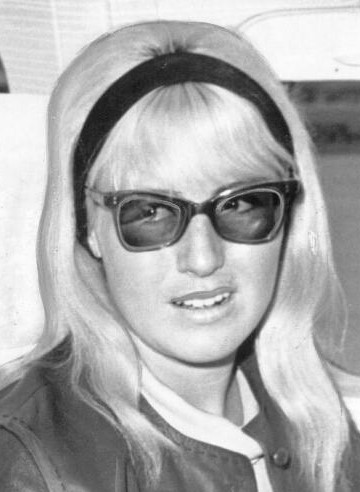 Concerning this post-touring period of late 1966 and early 1967, Cynthia Lennon describes her husband’s daily home activities: “When he was at home, he’d spend a lot of time lying in bed with a notepad. When he got up, he would sit at the piano or he’d go from one room to the other listening to music, gawping at television and then reading newspapers. (John) was basically dropping out from everything that was happening. He was thinking about things” Concerning this post-touring period of late 1966 and early 1967, Cynthia Lennon describes her husband’s daily home activities: “When he was at home, he’d spend a lot of time lying in bed with a notepad. When he got up, he would sit at the piano or he’d go from one room to the other listening to music, gawping at television and then reading newspapers. (John) was basically dropping out from everything that was happening. He was thinking about things”
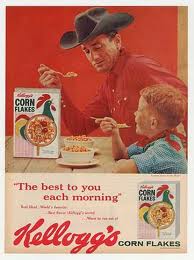 “I often sit at the piano, working at songs, with the telly on low in the background,” Lennon explained during this period. “If I’m a bit low and not getting much done, then words on the telly come through. That's when I had heard (singing) ‘Good morning, good morning.’ It was a corn flakes advertisement. I was never proud of it. I just knocked it off to do a song.” “I often sit at the piano, working at songs, with the telly on low in the background,” Lennon explained during this period. “If I’m a bit low and not getting much done, then words on the telly come through. That's when I had heard (singing) ‘Good morning, good morning.’ It was a corn flakes advertisement. I was never proud of it. I just knocked it off to do a song.”
The actual jingle from the '60s Kellogg’s ad went: “Good morning, good morning...The best to you each morning. Sunshine breakfast, Kellogg’s Corn Flakes, Crisp and full of fun.”
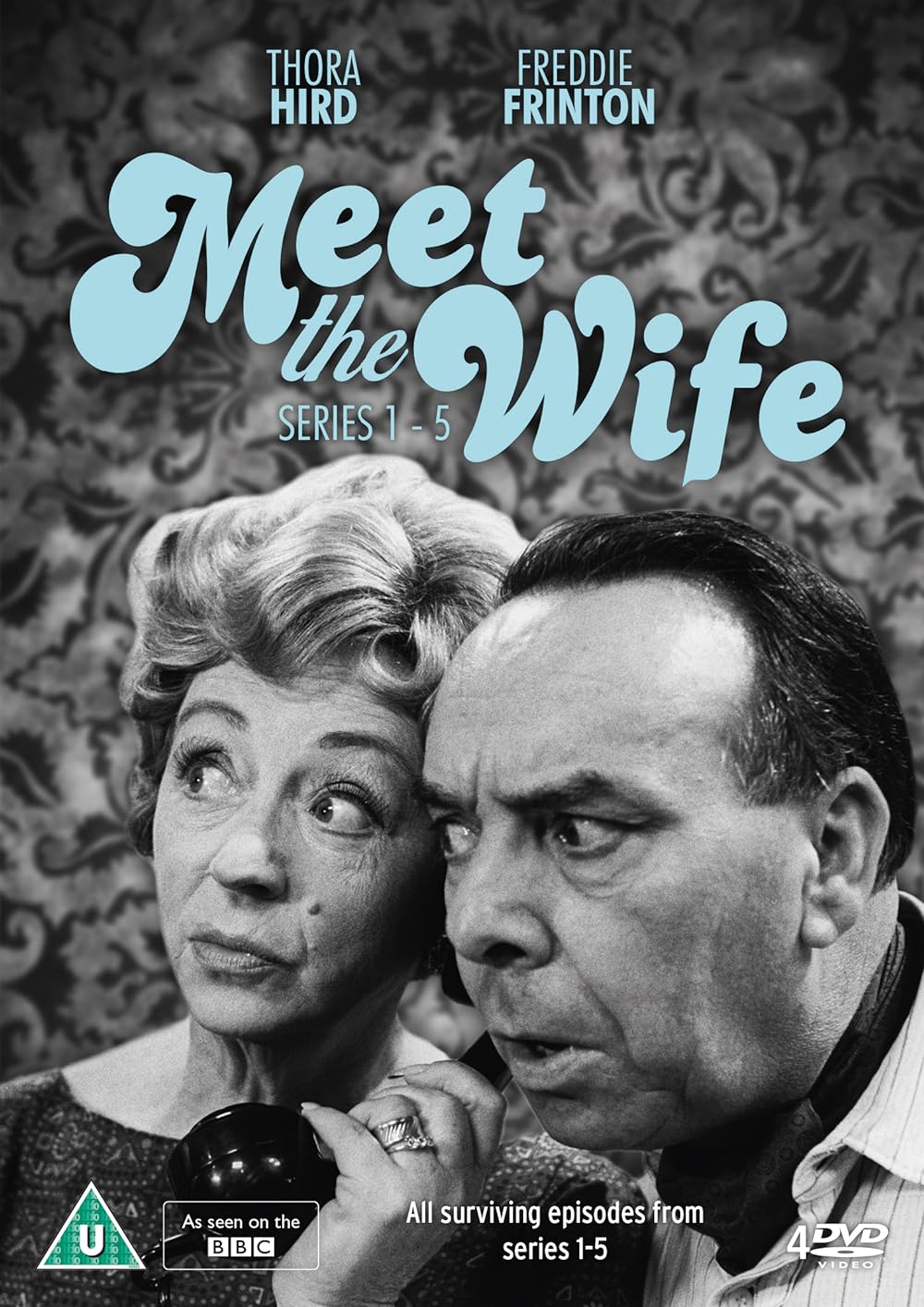 "John was feeling trapped in suburbia and was going through some problems with Cynthia,” Paul relates in his 1997 book “Many Years From Now.” “It was about his boring life at the time. There’s a reference in the lyrics to ‘nothing to do’ and ‘meet the wife’; there was an afternoon TV soap called ‘Meet The Wife’ that John watched, he was that bored, but I think he was also starting to get alarm bells and so ‘Good morning, good morning.’” "John was feeling trapped in suburbia and was going through some problems with Cynthia,” Paul relates in his 1997 book “Many Years From Now.” “It was about his boring life at the time. There’s a reference in the lyrics to ‘nothing to do’ and ‘meet the wife’; there was an afternoon TV soap called ‘Meet The Wife’ that John watched, he was that bored, but I think he was also starting to get alarm bells and so ‘Good morning, good morning.’”
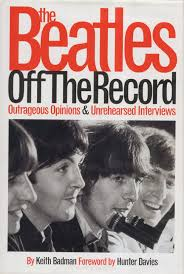 Concerning the British television show “Meet The Wife,” author Keith Badman, in his book “The Beatles Off The Record,” gives this interesting detail: “John had also been watching TV on the evening of Monday, 12 December 1966, when he watched an episode of ‘Meet The Wife.’ This was a long-running BBC1 comedy series that was now in its fifth and final season. The show John watched, ‘This Christmas, Shop Early,’ was transmitted on BBC1 between 7:30 and 7:59 and concerned the frantic activities of traditional last minute Christmas shopping. This subject manifested itself in the lines, ‘People running round its five o’clock, everywhere in town is getting dark, everyone you see if full of life, it’s time for tea and “Meet The Wife.”’ Concerning the British television show “Meet The Wife,” author Keith Badman, in his book “The Beatles Off The Record,” gives this interesting detail: “John had also been watching TV on the evening of Monday, 12 December 1966, when he watched an episode of ‘Meet The Wife.’ This was a long-running BBC1 comedy series that was now in its fifth and final season. The show John watched, ‘This Christmas, Shop Early,’ was transmitted on BBC1 between 7:30 and 7:59 and concerned the frantic activities of traditional last minute Christmas shopping. This subject manifested itself in the lines, ‘People running round its five o’clock, everywhere in town is getting dark, everyone you see if full of life, it’s time for tea and “Meet The Wife.”’
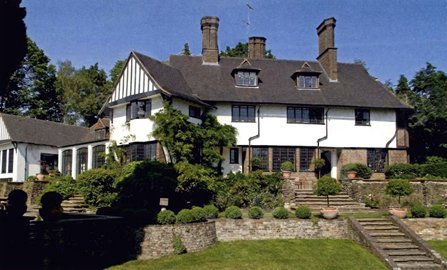 Presumed evidence such as the information detailed above pushes the most probable time of songwriting back to December of 1966, the writing being done at John and Cynthia’s Kenwood residence. As for any input from his usual songwriting partner, Paul states, “This is largely John’s song.” Lennon insisted in his 1980 Playboy interview, “’Good Morning is mine,” adding, “It’s a throwaway, a piece of garbage, I always thought.” However, the majority of most Beatle fans think differently. Presumed evidence such as the information detailed above pushes the most probable time of songwriting back to December of 1966, the writing being done at John and Cynthia’s Kenwood residence. As for any input from his usual songwriting partner, Paul states, “This is largely John’s song.” Lennon insisted in his 1980 Playboy interview, “’Good Morning is mine,” adding, “It’s a throwaway, a piece of garbage, I always thought.” However, the majority of most Beatle fans think differently.
Recording History
 Sometime presumably in January 1967, John Lennon recorded a demo of a new creation called “Good Morning Good Morning” in his home studio consisting of piano and vocals. The beats per measure were not parsed out on this demo as we hear it on the finished version, nor were the chord changes fully worked out yet. However, the complete set of lyrics words were already in place as well as the switch in rhythm for the bridge (“everybody knows there’s nothing doing…”). Sometime presumably in January 1967, John Lennon recorded a demo of a new creation called “Good Morning Good Morning” in his home studio consisting of piano and vocals. The beats per measure were not parsed out on this demo as we hear it on the finished version, nor were the chord changes fully worked out yet. However, the complete set of lyrics words were already in place as well as the switch in rhythm for the bridge (“everybody knows there’s nothing doing…”).
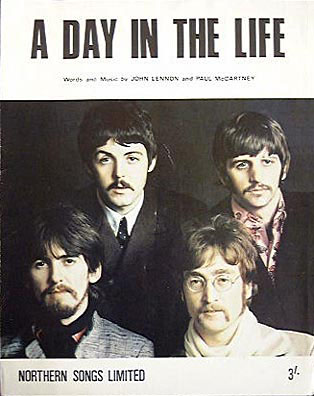 Lennon brought the song into the studio for the first time on February 8th, 1967, this being his second contribution for the “Pepper” project after “A Day In The Life.” The group entered EMI Studio Two at 7 pm (or thereabouts) to concentrate solely on recording the rhythm track of “Good Morning,” the session described by Beatles engineer Geoff Emerick in his book “Here, There And Everywhere” as “a fairly straightforward rocker…that could have fit in with any Beatles album released to date.” Lennon brought the song into the studio for the first time on February 8th, 1967, this being his second contribution for the “Pepper” project after “A Day In The Life.” The group entered EMI Studio Two at 7 pm (or thereabouts) to concentrate solely on recording the rhythm track of “Good Morning,” the session described by Beatles engineer Geoff Emerick in his book “Here, There And Everywhere” as “a fairly straightforward rocker…that could have fit in with any Beatles album released to date.”
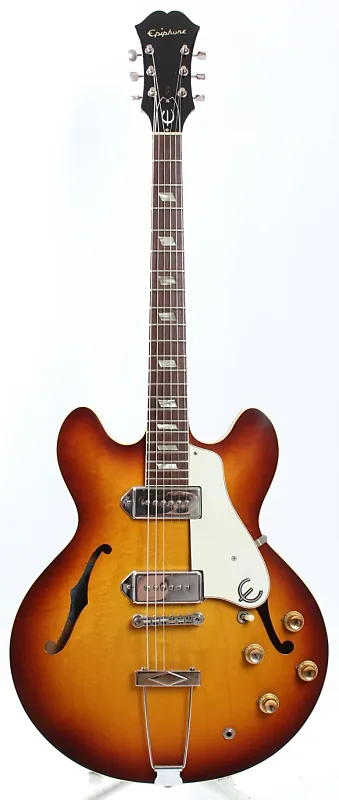 Much instruction from John must have been needed, so a good degree of time was no doubt spent working out time signature changes and also when Ringo’s cymbal crashes, drum fills and rhythm changes were required, which he performed perfectly on the finished product as recorded on this day. Eight takes of the rhythm track were recorded at this day's session, only four of them making it through the entire song. Only two tracks of the four-track tape were used to record this rhythm track, track one featuring drums and tambourine and track two containing John's Epiphone Casino guitar. Interestingly, as specified later in Kevin Howlett's liner notes in the 50th Anniversary release of the "Sgt. Pepper" album, the drums were played simultaneously by Ringo and Paul. Photographic evidence shows Paul standing while beating on Ringo's floor tom, this being heard sporadically during the song, while Ringo sits behind his drum kit as usual. By process of elimination, it must be George Harrison on tambourine, this ending up being his only contribution to this song. No vocals were recorded as of this point, these being overdubed at a later session, however off microphone voices can be detected on the takes recorded on this day. Much instruction from John must have been needed, so a good degree of time was no doubt spent working out time signature changes and also when Ringo’s cymbal crashes, drum fills and rhythm changes were required, which he performed perfectly on the finished product as recorded on this day. Eight takes of the rhythm track were recorded at this day's session, only four of them making it through the entire song. Only two tracks of the four-track tape were used to record this rhythm track, track one featuring drums and tambourine and track two containing John's Epiphone Casino guitar. Interestingly, as specified later in Kevin Howlett's liner notes in the 50th Anniversary release of the "Sgt. Pepper" album, the drums were played simultaneously by Ringo and Paul. Photographic evidence shows Paul standing while beating on Ringo's floor tom, this being heard sporadically during the song, while Ringo sits behind his drum kit as usual. By process of elimination, it must be George Harrison on tambourine, this ending up being his only contribution to this song. No vocals were recorded as of this point, these being overdubed at a later session, however off microphone voices can be detected on the takes recorded on this day.
 "Take one," as included on the "Super Deluxe Edition" box set of "Sgt. Pepper," opens up with Geoff Emerick making the announcement: "Take, ah, one. This is 'Good Morning Good Morning,' I believe - I'm not sure about that." John then states what sounds like, "In richness and in health, in sickness and in breath" just before "take one" begins. The song breaks down just at the point where what would have been the second verse moved into a changed time signature, the drummers not yet playing the change correctly. "Take one," as included on the "Super Deluxe Edition" box set of "Sgt. Pepper," opens up with Geoff Emerick making the announcement: "Take, ah, one. This is 'Good Morning Good Morning,' I believe - I'm not sure about that." John then states what sounds like, "In richness and in health, in sickness and in breath" just before "take one" begins. The song breaks down just at the point where what would have been the second verse moved into a changed time signature, the drummers not yet playing the change correctly.
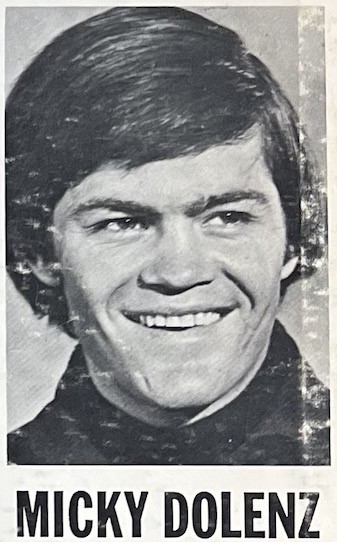 One visitor present on this day was Micky Dolenz of The Monkess who were all visiting London at the time. In a 2016 interview with famed author Mark Lewisohn, Micky Dolenz recalled: "I thought it was going to be some kind of crazy Beatlemania, fun-fest, freak-out, love-in, be-in, psycho-jello, and I got totally dressed-up for it. I mean, I had tie-dye underwear and paisley bell-bottoms and my hair was up in curlers and I think I had the Lennon glasses and I'm six-sheets-to-the-wind again of course. I walk in and it looks like my high school gymnasium! There was florescent lighting, nobody there but the four guys sitting in little folding chairs and Ringo behind the kit, and just jeans and t-shirts just playing. And I'm, like, 'Where are the girls?' I must have looked like such an idiot. I looked like a cross between Ronald McDonald and Charley Manson." One visitor present on this day was Micky Dolenz of The Monkess who were all visiting London at the time. In a 2016 interview with famed author Mark Lewisohn, Micky Dolenz recalled: "I thought it was going to be some kind of crazy Beatlemania, fun-fest, freak-out, love-in, be-in, psycho-jello, and I got totally dressed-up for it. I mean, I had tie-dye underwear and paisley bell-bottoms and my hair was up in curlers and I think I had the Lennon glasses and I'm six-sheets-to-the-wind again of course. I walk in and it looks like my high school gymnasium! There was florescent lighting, nobody there but the four guys sitting in little folding chairs and Ringo behind the kit, and just jeans and t-shirts just playing. And I'm, like, 'Where are the girls?' I must have looked like such an idiot. I looked like a cross between Ronald McDonald and Charley Manson."
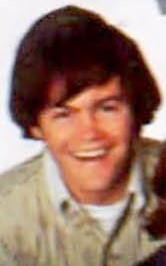 Micky Dolenz continues: "And I'll never forget it. John Lennon looks up at me and says, 'Hey Monkee Man!...You want to hear what we're working on?'...And he points up to George Martin and I remember this so clearly. He's wearing a three-piece suit and he pushes a button on a four-track tape recorder and I hear the tracks to 'Good Morning Good Morning.'...And then we sit around and then I remember some guy with a white coat and tie came in with tea...'Tea time, eh!' And we sat around a little table and had really God-awful tea. And then everybody sat around and then we were chatting - 'What's it like, The Monkees?,' me again trying to be so cool. And then I think it was John that went, 'Right lads, down in the mines.' And they all went back to work." Micky Dolenz continues: "And I'll never forget it. John Lennon looks up at me and says, 'Hey Monkee Man!...You want to hear what we're working on?'...And he points up to George Martin and I remember this so clearly. He's wearing a three-piece suit and he pushes a button on a four-track tape recorder and I hear the tracks to 'Good Morning Good Morning.'...And then we sit around and then I remember some guy with a white coat and tie came in with tea...'Tea time, eh!' And we sat around a little table and had really God-awful tea. And then everybody sat around and then we were chatting - 'What's it like, The Monkees?,' me again trying to be so cool. And then I think it was John that went, 'Right lads, down in the mines.' And they all went back to work."
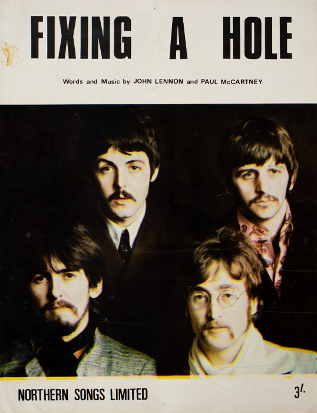 "Take eight" was one of the few complete recordings of the rhythm track, this beginning with Paul counting the song off. With some disjointed but nonetheless impressive drum fills from Ringo, as well as both John and Paul uttering "good morning" after Ringo's hearty ending cymbal crash, this eighth take became the keeper onto which overdubs would be added at a later session. This session ended at 2:15 am the next morning, allowing the group to all file home for some needed rest to be ready to start recording another new song, “Fixing A Hole,” the next day. "Take eight" was one of the few complete recordings of the rhythm track, this beginning with Paul counting the song off. With some disjointed but nonetheless impressive drum fills from Ringo, as well as both John and Paul uttering "good morning" after Ringo's hearty ending cymbal crash, this eighth take became the keeper onto which overdubs would be added at a later session. This session ended at 2:15 am the next morning, allowing the group to all file home for some needed rest to be ready to start recording another new song, “Fixing A Hole,” the next day.
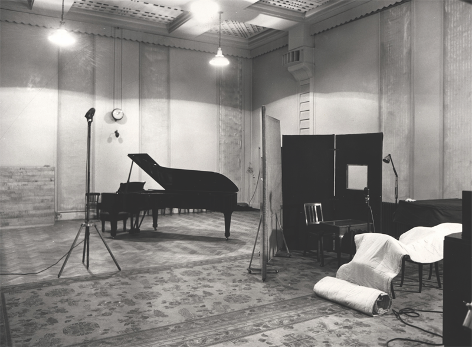 Eight days later on February 16th, 1967, The Beatles reconvened back in EMI Studios to continue sessions for John's “Good Morning Good Morning.” They moved over to EMI Studio Three this time, company documents indicating them arriving at 7 pm to perform overdubs. Paul recorded his bass guitar onto track three while Lennon added lead vocals onto track four. This complete recording can be heard on the 1996 released "Anthology 2" album, the above mentioned "Sgt Pepper" "Super Deluxe Edition" box set, and its companion "2 CD Anniversary Edition." Eight days later on February 16th, 1967, The Beatles reconvened back in EMI Studios to continue sessions for John's “Good Morning Good Morning.” They moved over to EMI Studio Three this time, company documents indicating them arriving at 7 pm to perform overdubs. Paul recorded his bass guitar onto track three while Lennon added lead vocals onto track four. This complete recording can be heard on the 1996 released "Anthology 2" album, the above mentioned "Sgt Pepper" "Super Deluxe Edition" box set, and its companion "2 CD Anniversary Edition."
 A rough mono mix of the song was made by producer George Martin, Geoff Emerick and second engineer Richard Lush with ADT (“artificial double tracking”) applied to John’s vocal, undoubtedly for Lennon to take home to listen to what they had done so far. With the four tracks of the tape filled, they then commenced to make two attempts at a reduction mix to leave space for more overdubs, the mixes numbered nine and ten, the last being deemed best. Much deliberation on Lennon’s part was deemed necessary to center his mind on just what the future overdubs would consist of. Geoff Emerick stated that this recording “sat on the shelf for the next three weeks while an indecisive Lennon made up his mind what kind of instrumentation he wanted added.” A rough mono mix of the song was made by producer George Martin, Geoff Emerick and second engineer Richard Lush with ADT (“artificial double tracking”) applied to John’s vocal, undoubtedly for Lennon to take home to listen to what they had done so far. With the four tracks of the tape filled, they then commenced to make two attempts at a reduction mix to leave space for more overdubs, the mixes numbered nine and ten, the last being deemed best. Much deliberation on Lennon’s part was deemed necessary to center his mind on just what the future overdubs would consist of. Geoff Emerick stated that this recording “sat on the shelf for the next three weeks while an indecisive Lennon made up his mind what kind of instrumentation he wanted added.”
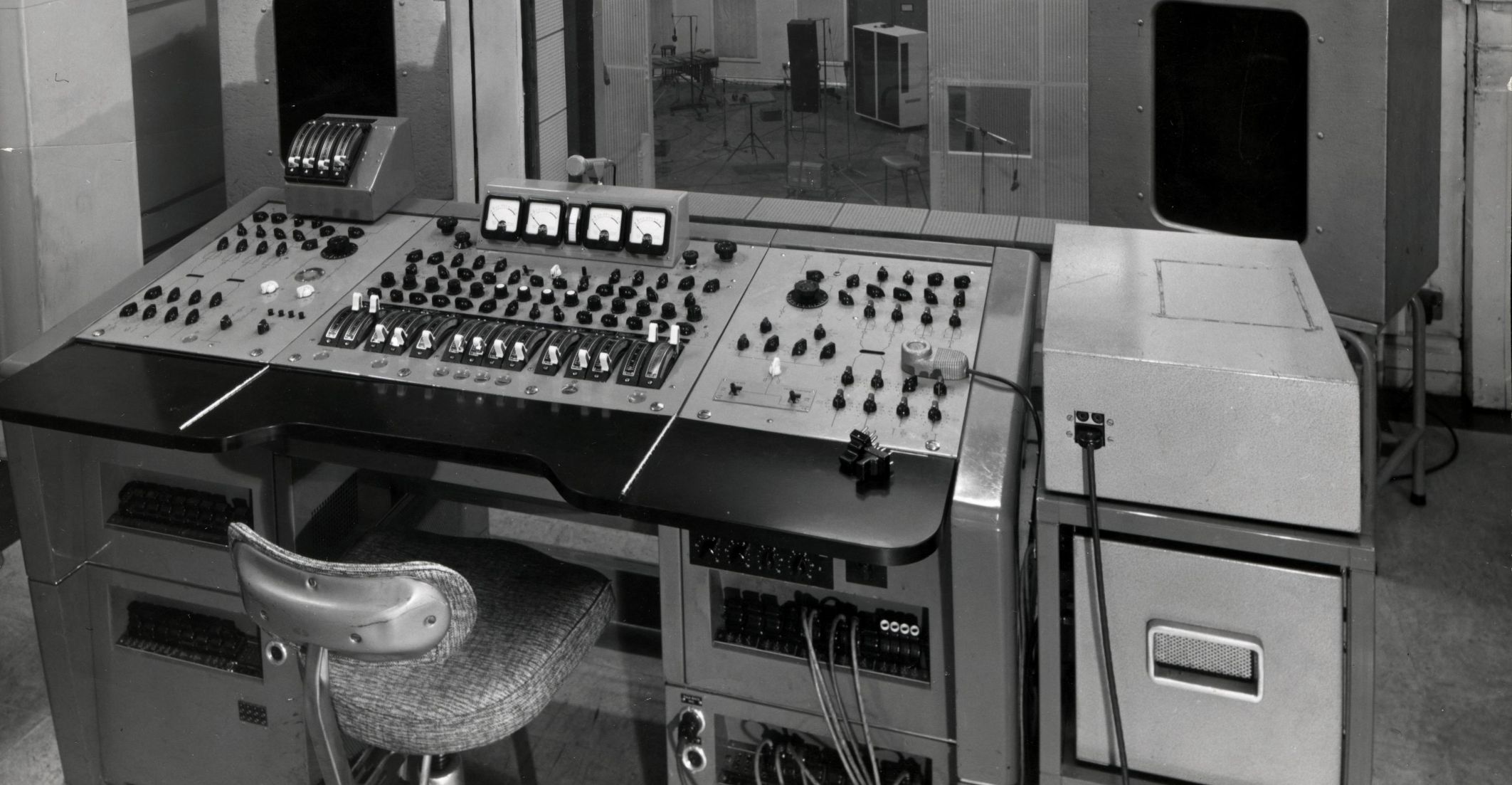 Only four days later, an additional mono mix of the song was viewed as necessary in order for the band to review the progress made thus far. This mono mix was done on February 20th, 1967 in the EMI Studio Three control room by the same team of George Martin, Geoff Emerick and Richard Lush. Perhaps John took the first demo home and Paul wanted one too…or maybe they just forgot they already made one four days earlier. In any event, this was for demo purposes only since they were far from finished with the song. Both this and the previous mono mix were labeled as “remix 1,” which is not to be confused with the mono “remix 1” that was made when the song was complete. The production staff had a lot on their plate at that time, being that they were creating a masterpiece album. I suppose we all can forgive them for labeling the mixes incorrectly. Only four days later, an additional mono mix of the song was viewed as necessary in order for the band to review the progress made thus far. This mono mix was done on February 20th, 1967 in the EMI Studio Three control room by the same team of George Martin, Geoff Emerick and Richard Lush. Perhaps John took the first demo home and Paul wanted one too…or maybe they just forgot they already made one four days earlier. In any event, this was for demo purposes only since they were far from finished with the song. Both this and the previous mono mix were labeled as “remix 1,” which is not to be confused with the mono “remix 1” that was made when the song was complete. The production staff had a lot on their plate at that time, being that they were creating a masterpiece album. I suppose we all can forgive them for labeling the mixes incorrectly.
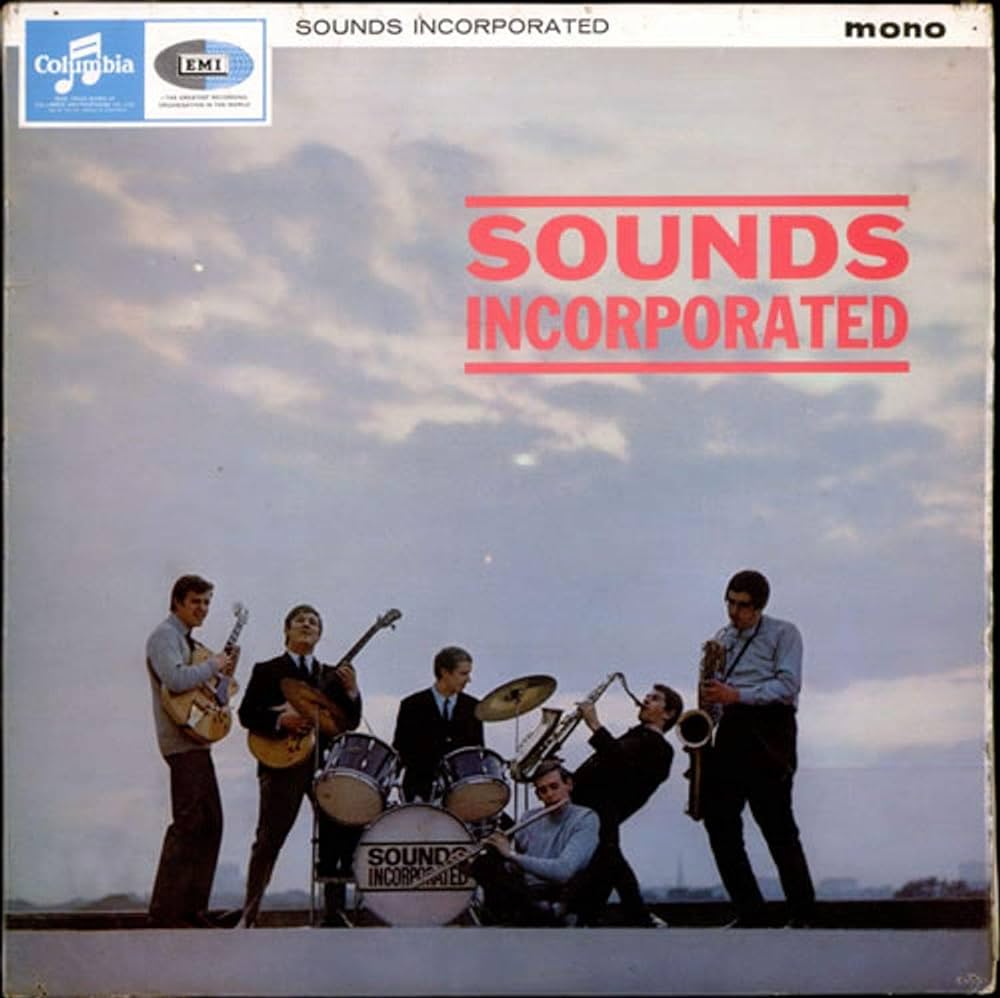 March 13th, 1967, or twenty-five days after the last recording session for the song, the group reconvened in EMI Studio Two to add an extensive overdub onto "Good Morning Good Morning." "For nearly a month, John ruminated about what instrumentation he wanted,” Geoff Emerick remembered. “He finally decided on adding brass, but he was adamant that it mustn’t sound ‘ordinary,’ and he insisted that George Martin hire a horn section comprised of older Liverpool mates instead of the top-flight session musicians we had been using. The group, who called themselves Sounds Incorporated, were nice enough blokes – actually, they were a lot of fun, which explained why Lennon liked them so much.” Paul explains: “When we came to record it we used ‘Sounds Incorporated’ to do a big sax thing; they were friends of ours who had been on tour with us.” Previously, George Martin had worked up a score for the horns to perform “translated from John’s guidance on guitar,” according to Bruce Spizer’s book “The Beatles’ Story On Capitol Records – Part Two.” March 13th, 1967, or twenty-five days after the last recording session for the song, the group reconvened in EMI Studio Two to add an extensive overdub onto "Good Morning Good Morning." "For nearly a month, John ruminated about what instrumentation he wanted,” Geoff Emerick remembered. “He finally decided on adding brass, but he was adamant that it mustn’t sound ‘ordinary,’ and he insisted that George Martin hire a horn section comprised of older Liverpool mates instead of the top-flight session musicians we had been using. The group, who called themselves Sounds Incorporated, were nice enough blokes – actually, they were a lot of fun, which explained why Lennon liked them so much.” Paul explains: “When we came to record it we used ‘Sounds Incorporated’ to do a big sax thing; they were friends of ours who had been on tour with us.” Previously, George Martin had worked up a score for the horns to perform “translated from John’s guidance on guitar,” according to Bruce Spizer’s book “The Beatles’ Story On Capitol Records – Part Two.”
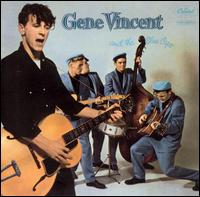 “Sounds Incorporated,” which was later shortened to “Sounds Inc.” by the time of this March session, had quite a lengthy history with The Beatles. This instrumental group was formed in Dartford, Kent in 1961 and was then recruited to be Gene Vincent’s backing band in April of that year, holding that gig for over two years. In this capacity, the band first met The Beatles while they were playing at The Star Club in Hamburg in April of 1962, Brian Epstein eventually becoming their manager in 1963. This led to the group becoming one of The Beatles opening acts of their 1965 American tour. This history, and their getting along well with Lennon, led the brass members of “Sounds Inc.,” some from the original lineup, to get the session booking for “Good Morning Good Morning.” “Sounds Incorporated,” which was later shortened to “Sounds Inc.” by the time of this March session, had quite a lengthy history with The Beatles. This instrumental group was formed in Dartford, Kent in 1961 and was then recruited to be Gene Vincent’s backing band in April of that year, holding that gig for over two years. In this capacity, the band first met The Beatles while they were playing at The Star Club in Hamburg in April of 1962, Brian Epstein eventually becoming their manager in 1963. This led to the group becoming one of The Beatles opening acts of their 1965 American tour. This history, and their getting along well with Lennon, led the brass members of “Sounds Inc.,” some from the original lineup, to get the session booking for “Good Morning Good Morning.”
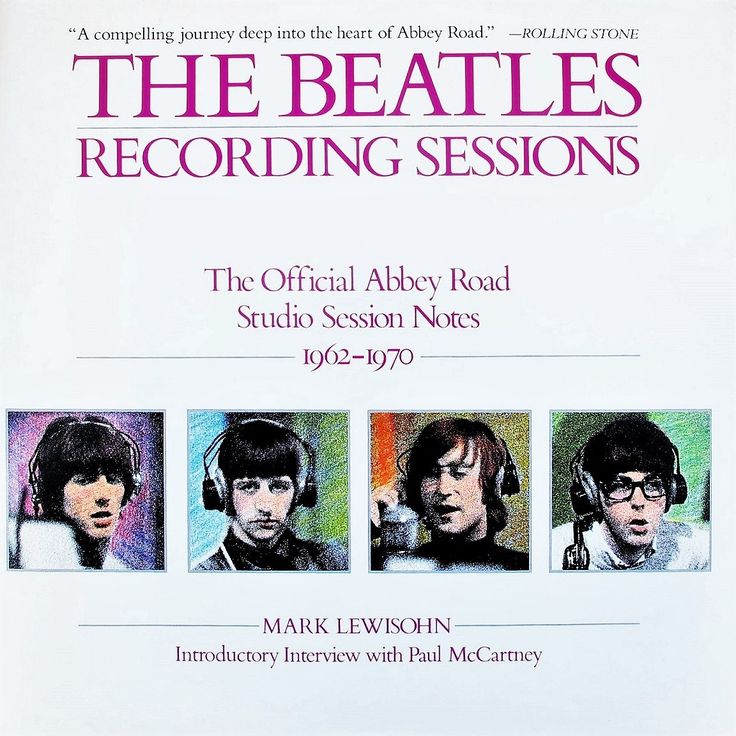 Six brass players were involved in this session, two trambonists, three saxophonists and also one French Horn player. Two of the sax players were holdovers from the original group and therefore were known by John, namely Barrie Cameron and Alan Holmes. The third sax man on this session was David Glyde. As for these trombone players, one was John Lee, but there is some mystery to the identity of the second player. Some sources identify this musician as Griff West, while Mark Lewisohn’s book “The Beatles Recording Sessions” identifies his name as A.N. Other but, since this doesn't match any other source, it can easily be assumed to be a mistaken reference to “another” trombonist. As for the French horn player, the same book identifies him as “Tom someone – no one can recall his surname!” Six brass players were involved in this session, two trambonists, three saxophonists and also one French Horn player. Two of the sax players were holdovers from the original group and therefore were known by John, namely Barrie Cameron and Alan Holmes. The third sax man on this session was David Glyde. As for these trombone players, one was John Lee, but there is some mystery to the identity of the second player. Some sources identify this musician as Griff West, while Mark Lewisohn’s book “The Beatles Recording Sessions” identifies his name as A.N. Other but, since this doesn't match any other source, it can easily be assumed to be a mistaken reference to “another” trombonist. As for the French horn player, the same book identifies him as “Tom someone – no one can recall his surname!”
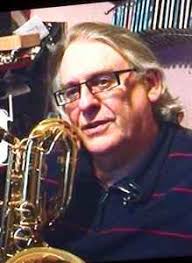 The session on this day was said to have begun at 7 pm. “We were there for about six hours,” remembered sax player Alan Holmes. “The first three hours we had refreshments and The Beatles played us the completed songs for the new album.” Geoff Emerick elaborated: “First it was time for a little party. The Beatles had been cloistered in the studio for so long, they were clearly suffering from cabin fever. In addition, very few people outside of our small inner circle had heard any of the ‘Pepper’ tracks, so as everyone sat downstairs catching up with one another and reminiscing about old times, we were asked to play mixes of the completed tracks through the studio speakers.” The session on this day was said to have begun at 7 pm. “We were there for about six hours,” remembered sax player Alan Holmes. “The first three hours we had refreshments and The Beatles played us the completed songs for the new album.” Geoff Emerick elaborated: “First it was time for a little party. The Beatles had been cloistered in the studio for so long, they were clearly suffering from cabin fever. In addition, very few people outside of our small inner circle had heard any of the ‘Pepper’ tracks, so as everyone sat downstairs catching up with one another and reminiscing about old times, we were asked to play mixes of the completed tracks through the studio speakers.”
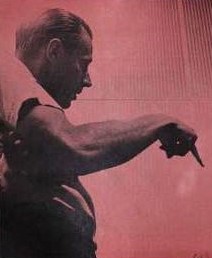 Geoff Emerick continued: “This went on for a couple of hours, with George Martin growing increasingly annoyed. He felt we were in the studio to work, and he was cognizant of the money EMI was spending on studio time; after all, he had to work to a budget. He tolerated it for as long as he could before wandering down into the studio and saying, diplomatically, ‘We should be moving along now, don’t you think?’ What else could the man say? (George Martin) never wanted to offend anyone, but, as producer, he was answerable to EMI, so he was caught in the middle. The Beatles, on the other hand, couldn’t have cared less about the amount of time being spent on the record.” Geoff Emerick continued: “This went on for a couple of hours, with George Martin growing increasingly annoyed. He felt we were in the studio to work, and he was cognizant of the money EMI was spending on studio time; after all, he had to work to a budget. He tolerated it for as long as he could before wandering down into the studio and saying, diplomatically, ‘We should be moving along now, don’t you think?’ What else could the man say? (George Martin) never wanted to offend anyone, but, as producer, he was answerable to EMI, so he was caught in the middle. The Beatles, on the other hand, couldn’t have cared less about the amount of time being spent on the record.”
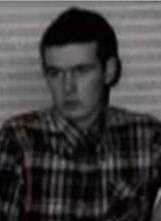 "While George (Martin) was busy being aggravated," Geoff Emerick adds, "I was studying the expressions of the Sounds Inc. guys, trying to measure their reactions to the tracks we were playing for them. They were mesmerized! We knew that what we had been doing was exceptional, but it was gratifying to see that kind of response from people fresh to the project. From that point on, every time anyone came by to visit The Beatles on a session, Richard (Lush) and I hoped that we would be asked to play back something that was completed, or in progress, not just because we loved hearing the tracks, but because we enjoyed seeing the stunned looks on their faces." "While George (Martin) was busy being aggravated," Geoff Emerick adds, "I was studying the expressions of the Sounds Inc. guys, trying to measure their reactions to the tracks we were playing for them. They were mesmerized! We knew that what we had been doing was exceptional, but it was gratifying to see that kind of response from people fresh to the project. From that point on, every time anyone came by to visit The Beatles on a session, Richard (Lush) and I hoped that we would be asked to play back something that was completed, or in progress, not just because we loved hearing the tracks, but because we enjoyed seeing the stunned looks on their faces."
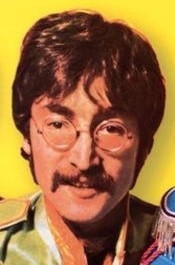 Once recording finally got under way, John Lennon exerted his authority in a very insistent way. Second engineer Richard Lush brought out: “They spent a long time doing the overdub, about three hours or maybe longer, but John Lennon thought it sounded too straight. So we ended up flanging, limiting and compressing (the overdub), anything to make it sound unlike brass playing. It was typical John Lennon – he just wanted it to sound weird.” Once recording finally got under way, John Lennon exerted his authority in a very insistent way. Second engineer Richard Lush brought out: “They spent a long time doing the overdub, about three hours or maybe longer, but John Lennon thought it sounded too straight. So we ended up flanging, limiting and compressing (the overdub), anything to make it sound unlike brass playing. It was typical John Lennon – he just wanted it to sound weird.”
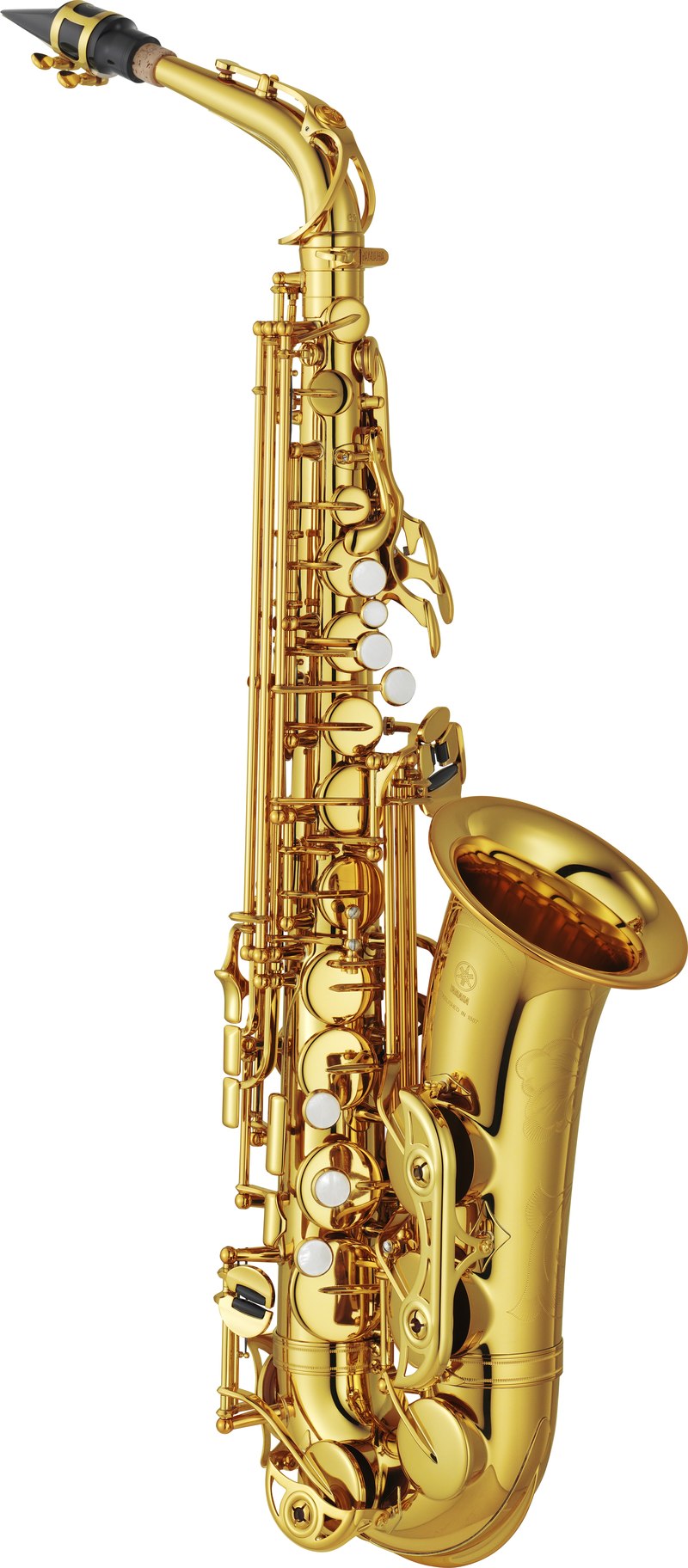 Geoff Emerick continued: “He was adamant that it mustn’t sound ‘ordinary.’ It took quite a long time to get a good take out of them because, throughout the session, John kept complaining that they were playing too ‘straight’ – he had a real bee in his bonnet about that. In the end, to satisfy Lennon’s demand that I take a different sonic approach, I shoved the mics right down the bells of the saxes and screwed the sound up with limiters and a healthy dose of effects like flanging and ADT; we pretty much used every piece of equipment at hand.” At 2:30 am the next morning, everyone filed out of EMI Studios for the night, apparently satisfied with the results of the day. Geoff Emerick continued: “He was adamant that it mustn’t sound ‘ordinary.’ It took quite a long time to get a good take out of them because, throughout the session, John kept complaining that they were playing too ‘straight’ – he had a real bee in his bonnet about that. In the end, to satisfy Lennon’s demand that I take a different sonic approach, I shoved the mics right down the bells of the saxes and screwed the sound up with limiters and a healthy dose of effects like flanging and ADT; we pretty much used every piece of equipment at hand.” At 2:30 am the next morning, everyone filed out of EMI Studios for the night, apparently satisfied with the results of the day.
 However, the final recording was far from complete. While good attention was given to various other “Pepper” tracks, they returned to “Good Morning Good Morning” fifteen days later, on March 28th, 1967 in EMI Studio Two. Their first decision was to redo John’s lead vocals, which they did first shortly after their arrival at 7 pm (or thereabouts). This filled the four track tape, so they did a tape reduction of "take 10" which reduced all of the elements to two tracks, this now being called "take 11." However, the final recording was far from complete. While good attention was given to various other “Pepper” tracks, they returned to “Good Morning Good Morning” fifteen days later, on March 28th, 1967 in EMI Studio Two. Their first decision was to redo John’s lead vocals, which they did first shortly after their arrival at 7 pm (or thereabouts). This filled the four track tape, so they did a tape reduction of "take 10" which reduced all of the elements to two tracks, this now being called "take 11."
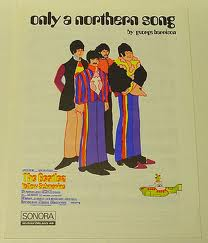 The next point of business was what would fill the gap in the solo section of the song. “Paul overdubbed a lead guitar part on the song,” Geoff Emerick remembered, “which did not do anything that would improve George Harrison’s mood. It appeared to me as if George was aggrieved a lot of the time…with good reason: Paul was playing a lot of his leads, and he had precious little to do. In addition, the one song he’d brought to the album had been rejected. (“Only A Northern Song.”) As we got into our fourth and fifth month of recording, the preparatory meetings at Paul’s house started to trail off, so the four Beatles began arriving at Abbey Road separately. Paul was almost always the first to come in, since he lived nearby, and George Harrison was often the last, so if Paul got an idea for a guitar part and Harrison wasn’t around, he’d sometimes say, ‘Well, let’s get on with it – I’ll just play the part myself.’” The next point of business was what would fill the gap in the solo section of the song. “Paul overdubbed a lead guitar part on the song,” Geoff Emerick remembered, “which did not do anything that would improve George Harrison’s mood. It appeared to me as if George was aggrieved a lot of the time…with good reason: Paul was playing a lot of his leads, and he had precious little to do. In addition, the one song he’d brought to the album had been rejected. (“Only A Northern Song.”) As we got into our fourth and fifth month of recording, the preparatory meetings at Paul’s house started to trail off, so the four Beatles began arriving at Abbey Road separately. Paul was almost always the first to come in, since he lived nearby, and George Harrison was often the last, so if Paul got an idea for a guitar part and Harrison wasn’t around, he’d sometimes say, ‘Well, let’s get on with it – I’ll just play the part myself.’”
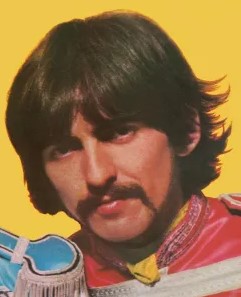 So, Paul performed the blistering guitar solo on this song, even double-tracking it at a strategic place just before the final verse. Also overdubbed at this session were backing vocals by Lennon and McCartney on the “good morning, good morning” harmonies with Lennon harmonizing with himself during the latter half of the song. Since Harrison did not arrive in time to perform the guitar solo and also did not make it for the backing vocals, one wonders if he made it in at all that day. So, Paul performed the blistering guitar solo on this song, even double-tracking it at a strategic place just before the final verse. Also overdubbed at this session were backing vocals by Lennon and McCartney on the “good morning, good morning” harmonies with Lennon harmonizing with himself during the latter half of the song. Since Harrison did not arrive in time to perform the guitar solo and also did not make it for the backing vocals, one wonders if he made it in at all that day.
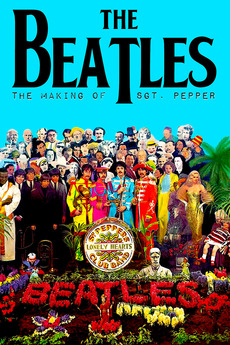 “It was in the middle of the night,” Geoff Emerick explains about this session around that time, “and I thought we were about to knock things on the head, but instead (John) came up to the control room and initiated a long conversation with me. Apparently he had been fretting about how to end the song – a simple fadeout was too "normal" for him, so he had come up with a concept. The idea was that as the music was fading away, the sounds of various animals would be heard.” In the film “The Making Of Sgt. Pepper,” George Martin explains: “John wanted to finish theis song with a collection of animal noises, starting off with a cock, identifying with the Kellogg’s commercial, and then each animal was capable of either devouring or frightening the one before it. I mean, we had a whole string of them.” “It was in the middle of the night,” Geoff Emerick explains about this session around that time, “and I thought we were about to knock things on the head, but instead (John) came up to the control room and initiated a long conversation with me. Apparently he had been fretting about how to end the song – a simple fadeout was too "normal" for him, so he had come up with a concept. The idea was that as the music was fading away, the sounds of various animals would be heard.” In the film “The Making Of Sgt. Pepper,” George Martin explains: “John wanted to finish theis song with a collection of animal noises, starting off with a cock, identifying with the Kellogg’s commercial, and then each animal was capable of either devouring or frightening the one before it. I mean, we had a whole string of them.”
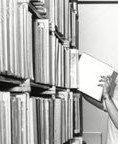 Geoff Emerick adds: “John had actually thought this through to the extent that he had written down a list of the animals he wanted on there, in order. I loved this idea, and despite the late hour Richard (Lush) was sent off into the EMI sound effects library to fetch the appropriate tapes. We sat up with John until nearly dawn dubbing them on, George Martin and the others having long gone home. True, the premise kind of breaks down at the end - there is a sheep chasing a horse and a cow chasing a hen - but it's all in good fun.” Geoff Emerick adds: “John had actually thought this through to the extent that he had written down a list of the animals he wanted on there, in order. I loved this idea, and despite the late hour Richard (Lush) was sent off into the EMI sound effects library to fetch the appropriate tapes. We sat up with John until nearly dawn dubbing them on, George Martin and the others having long gone home. True, the premise kind of breaks down at the end - there is a sheep chasing a horse and a cow chasing a hen - but it's all in good fun.”
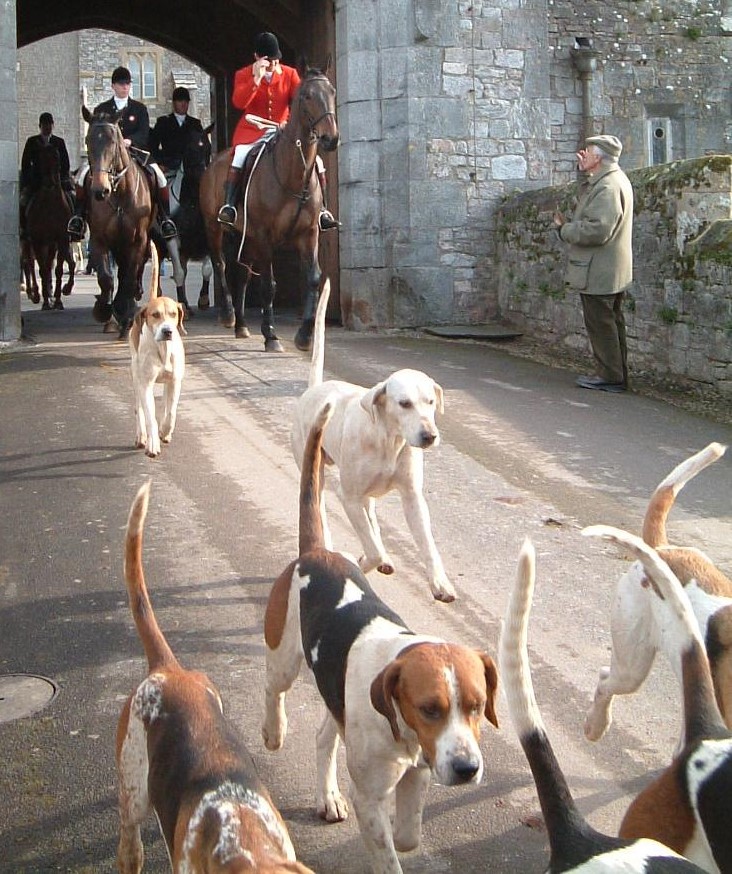 Two tapes from the EMI library were used: “Volume 35: Animals and Bees” for the lion, elephant, dog, sheep, cow and cat, and “Volume 57: Fox-hunt” for the dogs chasing the fox, the bugle and the galloping horses. The order of the animal effects are cock, cat, dog, horse, sheep, lion, elephant, dogs chasing a fox with horses galloping, cow and finally a hen. Two tapes from the EMI library were used: “Volume 35: Animals and Bees” for the lion, elephant, dog, sheep, cow and cat, and “Volume 57: Fox-hunt” for the dogs chasing the fox, the bugle and the galloping horses. The order of the animal effects are cock, cat, dog, horse, sheep, lion, elephant, dogs chasing a fox with horses galloping, cow and finally a hen.
Most of the animal sound effects were assembled on this day but were not overdubbed onto the song until later. With some overdubbing onto “Being For The Benefit Of Mr. Kite!” being performed at some point during this day as well, the doors of EMI Studio Two were finally closed at 4:45 am the next morning.
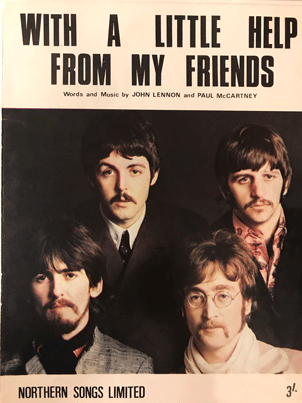 Later that day, March 29th, 1967, the group reassembled into EMI Studio Two sometime after 7 pm to finish off “Good Morning Good Morning” as well as begin a new song, this being “With A Little Help From My Friends.” The first order of business was to add a few more animal noises to complete the collage as we’ve come to know it, this then being overdubbed onto "take 11." This completed “Good Morning Good Morning” for good, the EMI staff then turning to overdubbing the elaborate organ sound effects onto “Mr. Kite!” before work on Ringo’s vocal contribution to the album began. By 5:45 am the following morning, the session was finally complete. Later that day, March 29th, 1967, the group reassembled into EMI Studio Two sometime after 7 pm to finish off “Good Morning Good Morning” as well as begin a new song, this being “With A Little Help From My Friends.” The first order of business was to add a few more animal noises to complete the collage as we’ve come to know it, this then being overdubbed onto "take 11." This completed “Good Morning Good Morning” for good, the EMI staff then turning to overdubbing the elaborate organ sound effects onto “Mr. Kite!” before work on Ringo’s vocal contribution to the album began. By 5:45 am the following morning, the session was finally complete.
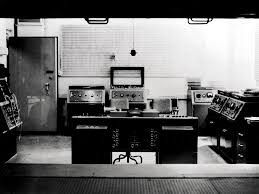 With the song now finally complete, a proper mono mix, as well as the stereo mix, could be attempted on “Good Morning Good Morning,” this happening on April 6th, 1967 in the EMI Studio Two control room from 7 pm to 1 am on the following day. The same team of George Martin, Geoff Emerick and Richard Lush worked hard to get both mixes done, the mono being tackled first. Two mono mixes were produced, the second being deemed "best" for the time being. With the song now finally complete, a proper mono mix, as well as the stereo mix, could be attempted on “Good Morning Good Morning,” this happening on April 6th, 1967 in the EMI Studio Two control room from 7 pm to 1 am on the following day. The same team of George Martin, Geoff Emerick and Richard Lush worked hard to get both mixes done, the mono being tackled first. Two mono mixes were produced, the second being deemed "best" for the time being.
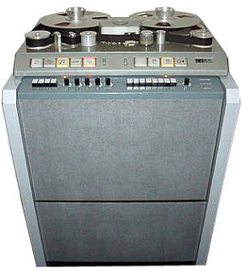 Then they began work on creating the song's stereo mix. Geoff Emerick explained this mixing process: “’Good Morning Good Morning’ ended up with the dubious distinction of being the ‘Pepper’ track with the largest number of overdubs, hence the most four-to-four reductions (premixes bounced between tape machines in order to open up new tracks). Despite that, it still sounds good, albeit a bit strident due to all the compensatory top end we had to add during mixing. There’s a lot of ADT on John’s voice, and on Paul’s lead guitar – in one spot, there’s a huge ‘wow’ on the guitar where the effect almost makes it sound like the note was bent. One reason why our Automatic Double Tracking worked so well was that it had a sweep oscillator control that you could actually play like a musical instrument, allowing you to constantly vary the delay time in response to the performance.” Then they began work on creating the song's stereo mix. Geoff Emerick explained this mixing process: “’Good Morning Good Morning’ ended up with the dubious distinction of being the ‘Pepper’ track with the largest number of overdubs, hence the most four-to-four reductions (premixes bounced between tape machines in order to open up new tracks). Despite that, it still sounds good, albeit a bit strident due to all the compensatory top end we had to add during mixing. There’s a lot of ADT on John’s voice, and on Paul’s lead guitar – in one spot, there’s a huge ‘wow’ on the guitar where the effect almost makes it sound like the note was bent. One reason why our Automatic Double Tracking worked so well was that it had a sweep oscillator control that you could actually play like a musical instrument, allowing you to constantly vary the delay time in response to the performance.”
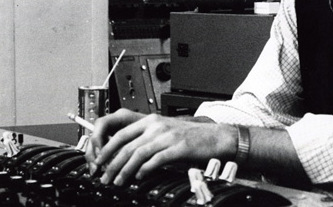 “During the mix,” Geoff Emerick continued, “I also enjoyed whacking the faders all the way up for Ringo’s huge tom hit during the stop time – so much so that the limiters nearly overloaded, but it definitely gets the listener’s attention! Add in the flanged brass, miked in an unorthodox way, and it is all icing on the cake; take those effects off and the recording doesn’t have the same magic. That song serves as a good example of how simple manipulation can improve a track sonically.” “During the mix,” Geoff Emerick continued, “I also enjoyed whacking the faders all the way up for Ringo’s huge tom hit during the stop time – so much so that the limiters nearly overloaded, but it definitely gets the listener’s attention! Add in the flanged brass, miked in an unorthodox way, and it is all icing on the cake; take those effects off and the recording doesn’t have the same magic. That song serves as a good example of how simple manipulation can improve a track sonically.”
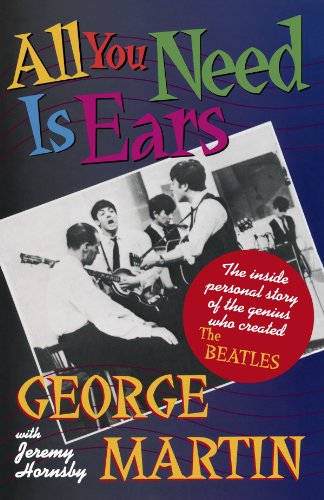 One discovery during the creating of the stereo mix is explained by George Martin in his book “All You Need Is Ears”: “The order we had worked out for the album meant that that track was to be followed by a reprise of the ‘Sgt. Pepper’ song, and of course I was trying to make the whole thing flow. So imagine my delight when I discovered that the sound of a chicken clucking at the end of ‘Good Morning’ was remarkably like the guitar sound at the beginning of ‘Sgt. Pepper.’ I was able to cut and mix the two tracks in such a way that one actually turned into the other. That was one of the luckiest edits one could ever get...Sgt. Pepper himself was breathing life into the project by this time” One discovery during the creating of the stereo mix is explained by George Martin in his book “All You Need Is Ears”: “The order we had worked out for the album meant that that track was to be followed by a reprise of the ‘Sgt. Pepper’ song, and of course I was trying to make the whole thing flow. So imagine my delight when I discovered that the sound of a chicken clucking at the end of ‘Good Morning’ was remarkably like the guitar sound at the beginning of ‘Sgt. Pepper.’ I was able to cut and mix the two tracks in such a way that one actually turned into the other. That was one of the luckiest edits one could ever get...Sgt. Pepper himself was breathing life into the project by this time”
 Rather than admitting to a "lucky edit" as if by chance, Geoff Emerick recalled it a bit differently. “No no, that was no accident,” Geoff Emerick relates. “We fully realized that the cluck matched the guitar. In fact it wasn’t a perfect match so we shifted the cluck up in time to match correctly…I didn’t even have to alter the pitch of the cluck with the use of varispeed, though I did tighten up the gap between songs by cutting out a bit of tape…It was a fantastic little thing which will always stick in my mind.” Rather than admitting to a "lucky edit" as if by chance, Geoff Emerick recalled it a bit differently. “No no, that was no accident,” Geoff Emerick relates. “We fully realized that the cluck matched the guitar. In fact it wasn’t a perfect match so we shifted the cluck up in time to match correctly…I didn’t even have to alter the pitch of the cluck with the use of varispeed, though I did tighten up the gap between songs by cutting out a bit of tape…It was a fantastic little thing which will always stick in my mind.”
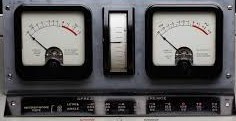 It took five attempts at this stereo mix to get a keeper, remix 5 being deemed as "best." The original rhythm track is entirely panned to the left channel while all of the horns and the backing “good morning” harmonies are entirely panned to the right, as with Paul’s double-tracked accentuated guitar riff just before the final verse begins. John’s lead and harmony vocals are centered in the mix, as are Paul’s bass and entire guitar solo. There is some variance with the placement of the animal effects however, some being centered in the mix and others appearing on only the left or right channel. They obviously took great pains to create an interesting audio landscape on this track as with many of the “Sgt. Pepper” songs. It took five attempts at this stereo mix to get a keeper, remix 5 being deemed as "best." The original rhythm track is entirely panned to the left channel while all of the horns and the backing “good morning” harmonies are entirely panned to the right, as with Paul’s double-tracked accentuated guitar riff just before the final verse begins. John’s lead and harmony vocals are centered in the mix, as are Paul’s bass and entire guitar solo. There is some variance with the placement of the animal effects however, some being centered in the mix and others appearing on only the left or right channel. They obviously took great pains to create an interesting audio landscape on this track as with many of the “Sgt. Pepper” songs.
 On April 19th, 1967, the same production team of George Martin, Geoff Emerick and Richard Lush assembled in the control room of EMI Studio Two from 7 pm to 12:30 am to look at improving upon the mono mix of the song. Although they already viewed mono remix 2, as created on April 6th, 1967 as best, they wanted it to work better as a segue into “Sgt. Pepper Reprise” as they had done on the stereo mix. They put in great pains to create this mono mix, fourteen attempts being made (numbered 10 to 23 for some reason). On April 19th, 1967, the same production team of George Martin, Geoff Emerick and Richard Lush assembled in the control room of EMI Studio Two from 7 pm to 12:30 am to look at improving upon the mono mix of the song. Although they already viewed mono remix 2, as created on April 6th, 1967 as best, they wanted it to work better as a segue into “Sgt. Pepper Reprise” as they had done on the stereo mix. They put in great pains to create this mono mix, fourteen attempts being made (numbered 10 to 23 for some reason).
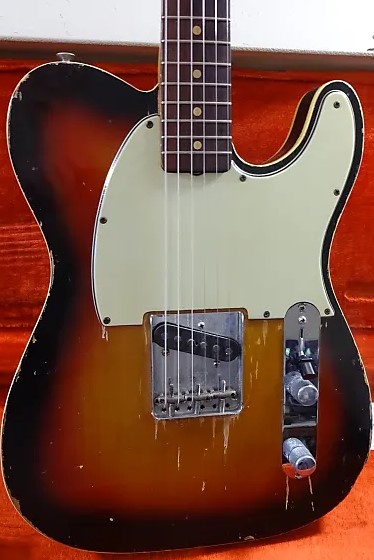 The finished mono version is markedly different than the stereo which most are familiar with. First of all, Paul’s guitar solo gets pushed down in volume to allow the vocals “people running ‘round, it’s five o’clock” to be heard more prominently, and his guitar is treated to an extra dose of ADT just after the lyrics “Meet The Wife.” As for the song’s ending, the music fades earlier allowing for only nine repeats of the “good morning” vocal lines instead of ten on the stereo. The fox hunt segment at the end of the animal sound effects is six seconds shorter in mono which then is faded into the hen clucking, this not matching up well with the guitar note on “Sgt. Pepper Reprise” as had the stereo version. All in all, the mono version ends up being six seconds shorter than the stereo and doesn’t include the "lucky edit" they achieved on the stereo mix after all. So much for the claim that the mono version of the “Sgt. Pepper” album is the superior version. Not in this case anyway! The finished mono version is markedly different than the stereo which most are familiar with. First of all, Paul’s guitar solo gets pushed down in volume to allow the vocals “people running ‘round, it’s five o’clock” to be heard more prominently, and his guitar is treated to an extra dose of ADT just after the lyrics “Meet The Wife.” As for the song’s ending, the music fades earlier allowing for only nine repeats of the “good morning” vocal lines instead of ten on the stereo. The fox hunt segment at the end of the animal sound effects is six seconds shorter in mono which then is faded into the hen clucking, this not matching up well with the guitar note on “Sgt. Pepper Reprise” as had the stereo version. All in all, the mono version ends up being six seconds shorter than the stereo and doesn’t include the "lucky edit" they achieved on the stereo mix after all. So much for the claim that the mono version of the “Sgt. Pepper” album is the superior version. Not in this case anyway!
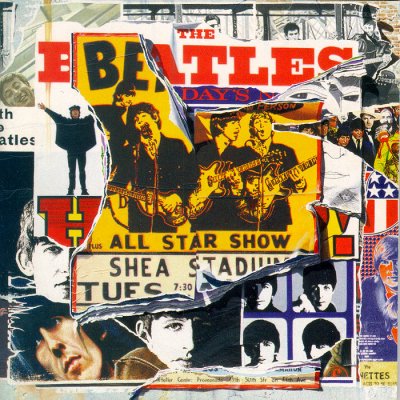 Another stereo mix of the song was made especially by George Martin for the release of “Anthology 2” in 1996. The purpose was to display the state of the song as of February 16th, 1967, which was comprising the original rhythm track, Lennon’s first lead vocal take and Paul’s overdubbed bass. The stereo landscape is accentuated by John’s vocals panned slightly to the left channel. Another stereo mix of the song was made especially by George Martin for the release of “Anthology 2” in 1996. The purpose was to display the state of the song as of February 16th, 1967, which was comprising the original rhythm track, Lennon’s first lead vocal take and Paul’s overdubbed bass. The stereo landscape is accentuated by John’s vocals panned slightly to the left channel.
 Then, sometime in 2016 or early 2017, George Martin's son Giles Martin, along with engineer Sam Okell, returned to the master tapes of "Good Morning Good Morning" in order to create a new stereo mix of the song, the intention being to pattern this after what they considered to be the superior mono mix of 1967. The song is more vibrant than ever heard before at this state, the low frequencies booming away because of Paul's bass guitar and floor tom beating. Giles Martin also created mixes for "take one" and "take eight," all three of these new mixes being included in various editions of the "Sgt. Pepper" 50th Anniversary releases of 2017. Then, sometime in 2016 or early 2017, George Martin's son Giles Martin, along with engineer Sam Okell, returned to the master tapes of "Good Morning Good Morning" in order to create a new stereo mix of the song, the intention being to pattern this after what they considered to be the superior mono mix of 1967. The song is more vibrant than ever heard before at this state, the low frequencies booming away because of Paul's bass guitar and floor tom beating. Giles Martin also created mixes for "take one" and "take eight," all three of these new mixes being included in various editions of the "Sgt. Pepper" 50th Anniversary releases of 2017.
Song Structure and Style
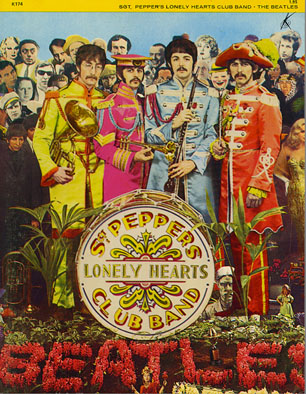 The irregularities of the song “Good Morning Good Morning” are best described by George Martin in the movie “The Making Of Sgt. Pepper” as follows: “’Good Morning’ was typical of (John) that it was of odd meters that sounded perfectly natural. He would have a 3/4 bar, a 4/4 bar and a 5/4 bar even, without knowing it. It was to be a very hard-driving punchy thing. The tune itself was quite simple, but it is full of accents all over the place.” The irregularities of the song “Good Morning Good Morning” are best described by George Martin in the movie “The Making Of Sgt. Pepper” as follows: “’Good Morning’ was typical of (John) that it was of odd meters that sounded perfectly natural. He would have a 3/4 bar, a 4/4 bar and a 5/4 bar even, without knowing it. It was to be a very hard-driving punchy thing. The tune itself was quite simple, but it is full of accents all over the place.”
John had it parsed out in his head in a quite irregular format, right down to its actual structure. Two types of verses are displayed in this composition which sound identical in the first few measures but go on entirely different tangents as they progress. The structure winds up as ‘verse 1/ verse 2/ bridge/ verse 1/ verse 2 (solo)/ bridge/ verse 1’ (or abcabca) with a brief introduction and extended conclusion added on.
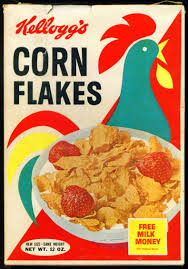 The song begins with the rooster (cock) crowing, symbolizing the Kellogg’s commercial inspiration. A four-measure intro in straight 4/4 time follows immediately with horns blaring away in the first measure as the rhythm track, including Paul's 16th-note floor tom beats and bass guitar overdub, holds down the background. The alarming vocal harmonies of “Good morning, good morning, good morning, good morning, good morning-ah” seem to be meant to startle us up out of bed. The last measure comprises a simple snare drum roll from Ringo and an overdubbed guitar accentuation from Paul. The song begins with the rooster (cock) crowing, symbolizing the Kellogg’s commercial inspiration. A four-measure intro in straight 4/4 time follows immediately with horns blaring away in the first measure as the rhythm track, including Paul's 16th-note floor tom beats and bass guitar overdub, holds down the background. The alarming vocal harmonies of “Good morning, good morning, good morning, good morning, good morning-ah” seem to be meant to startle us up out of bed. The last measure comprises a simple snare drum roll from Ringo and an overdubbed guitar accentuation from Paul.
 The opening verse is twelve measures long but with varying measure lengths which appear as follows: 3/4, 4/4, 3/4, 3/4, 5/4, 4/4, 5/4, 4/4, 3/4, 3/4, 4/4 and 4/4. (This, however, is left up to interpretation and may indeed vary in sheet music or in personal opinion.) The first five measures feature the rhythm track, bass guitar and Lennon’s lead vocal only, the overdubbed horns coming in again at the sixth measure to fill in the gap while Ringo plays another simple snare drum fill. After allowing John’s vocal melody line to dominate in the five beats of the seventh measure, the horns reappear in the eighth measure and continue to play until the twelfth measure, breaking again for yet another Ringo snare drum fill. The harmony “good morning” vocals appear again in the eleventh and twelfth measures to drill the song’s title into our minds. The opening verse is twelve measures long but with varying measure lengths which appear as follows: 3/4, 4/4, 3/4, 3/4, 5/4, 4/4, 5/4, 4/4, 3/4, 3/4, 4/4 and 4/4. (This, however, is left up to interpretation and may indeed vary in sheet music or in personal opinion.) The first five measures feature the rhythm track, bass guitar and Lennon’s lead vocal only, the overdubbed horns coming in again at the sixth measure to fill in the gap while Ringo plays another simple snare drum fill. After allowing John’s vocal melody line to dominate in the five beats of the seventh measure, the horns reappear in the eighth measure and continue to play until the twelfth measure, breaking again for yet another Ringo snare drum fill. The harmony “good morning” vocals appear again in the eleventh and twelfth measures to drill the song’s title into our minds.
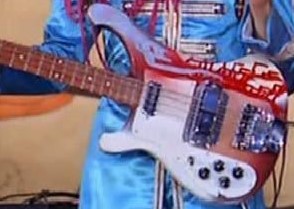 The second verse begins relatively the same as the first except for the horns playing a counter-melody to John’s vocal phrasings right from the beginning this time. This verse veers away from the structure of the first verse directly after the fifth measure is heard, this verse being only five measures long. The song then abruptly moves into the first bridge which is played in a swing beat not-unlike what is heard in “Fixing A Hole” and sticks with a 4/4 meter throughout, the bridge being six measures long. The horns play a continuous march-like melody line which repeats itself throughout the first five measures. John’s vocals come in on the second measure with rapid-fire speed and throw out line after line until he finally takes a breath for the final sixth measure, which is filled with another snare fill and bass line. The second verse begins relatively the same as the first except for the horns playing a counter-melody to John’s vocal phrasings right from the beginning this time. This verse veers away from the structure of the first verse directly after the fifth measure is heard, this verse being only five measures long. The song then abruptly moves into the first bridge which is played in a swing beat not-unlike what is heard in “Fixing A Hole” and sticks with a 4/4 meter throughout, the bridge being six measures long. The horns play a continuous march-like melody line which repeats itself throughout the first five measures. John’s vocals come in on the second measure with rapid-fire speed and throw out line after line until he finally takes a breath for the final sixth measure, which is filled with another snare fill and bass line.
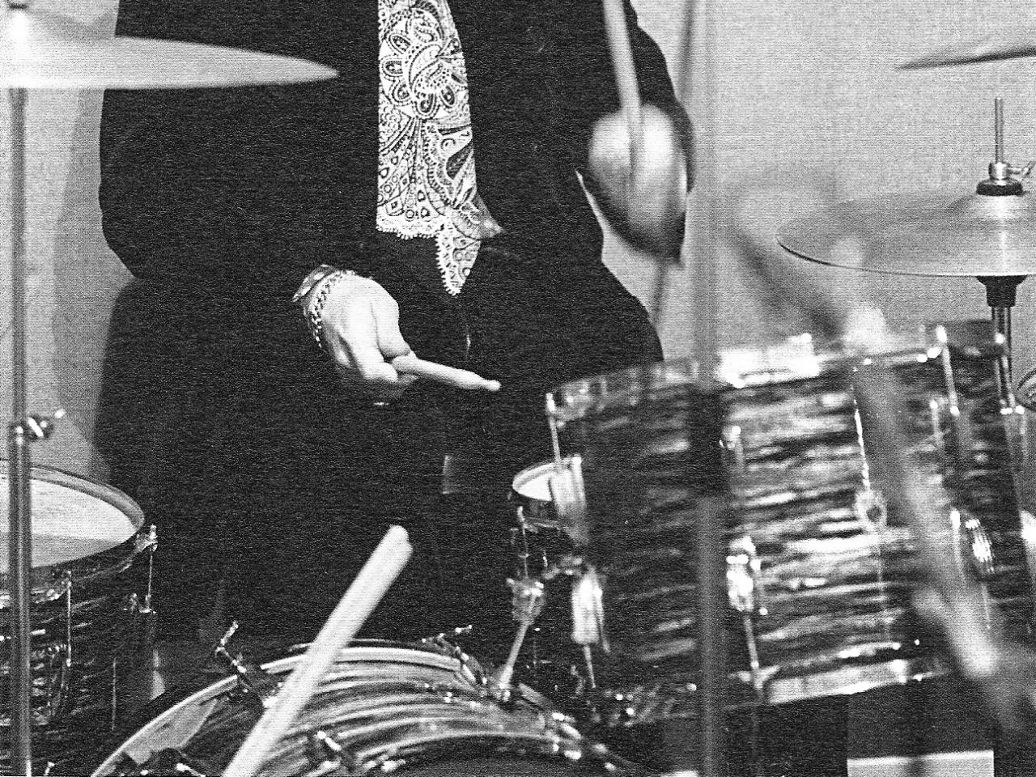 We then move back into a verse of the initial length and style of the first verse, the only difference instrumentally being the horn part beginning in the first measure as it did in the second verse. This transcends into a repeat of the second style of verse with the identical instrumentation except for it being used as a solo piece for the song, John’s vocals being replaced by Paul’s blistering lead guitar part. As before, it abruptly moves right into another bridge while Paul still interjects periodic lead guitar phrases. Another added element this time around is Lennon harmonizing with himself throughout the entire bridge. And, to top things off, Paul adds an ending lead guitar phrase to the bridge which is double-tracked on top of another of Ringo’s snare drum fills. We then move back into a verse of the initial length and style of the first verse, the only difference instrumentally being the horn part beginning in the first measure as it did in the second verse. This transcends into a repeat of the second style of verse with the identical instrumentation except for it being used as a solo piece for the song, John’s vocals being replaced by Paul’s blistering lead guitar part. As before, it abruptly moves right into another bridge while Paul still interjects periodic lead guitar phrases. Another added element this time around is Lennon harmonizing with himself throughout the entire bridge. And, to top things off, Paul adds an ending lead guitar phrase to the bridge which is double-tracked on top of another of Ringo’s snare drum fills.
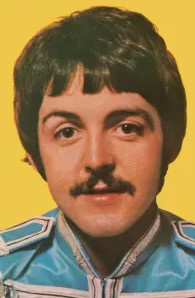 We now move into the final verse, which is of the length and style of the first verse. The elemental differences here being that John is still harmonizing with himself throughout and Paul adds one final jab on lead guitar in the sixth measure. Another noticeable difference here is a slight difference in the harmony backing vocals, being sung as “good morning, good morning, good…” in the last two measures of the verse and as the song fades away in the conclusion that follows. The final measure also includes a repeat of the introductory rooster crow, which is actually played slightly slower than what was heard at the beginning of the song. We now move into the final verse, which is of the length and style of the first verse. The elemental differences here being that John is still harmonizing with himself throughout and Paul adds one final jab on lead guitar in the sixth measure. Another noticeable difference here is a slight difference in the harmony backing vocals, being sung as “good morning, good morning, good…” in the last two measures of the verse and as the song fades away in the conclusion that follows. The final measure also includes a repeat of the introductory rooster crow, which is actually played slightly slower than what was heard at the beginning of the song.
 This crow, then, signals the cacophony of animal effects detailed earlier which takes center stage on top of the full backing track complete with backing vocals and horns, Ringo and Paul both adding accentuating drum fills at random. The backing track of the conclusion is seventeen measures in length on the stereo mix and fifteen measures on the mono mix, the engineers fading it down differently for each mix. All measures are in 4/4 this time around. Listen carefully, however, for John (or Paul) yelling out another “good!” in the fourteenth measure of the conclusion just before the fading away of the instrumental track. This crow, then, signals the cacophony of animal effects detailed earlier which takes center stage on top of the full backing track complete with backing vocals and horns, Ringo and Paul both adding accentuating drum fills at random. The backing track of the conclusion is seventeen measures in length on the stereo mix and fifteen measures on the mono mix, the engineers fading it down differently for each mix. All measures are in 4/4 this time around. Listen carefully, however, for John (or Paul) yelling out another “good!” in the fourteenth measure of the conclusion just before the fading away of the instrumental track.
 Lennon’s musical vision appears to have been portrayed exactly as it was in his head, John staging out the structure on his electric rhythm guitar perfectly on the backing track. Both his lead and harmony vocals come off effortlessly but with the precision of what he intended, even though singing harmony wasn’t usually his strong suit. Lennon’s musical vision appears to have been portrayed exactly as it was in his head, John staging out the structure on his electric rhythm guitar perfectly on the backing track. Both his lead and harmony vocals come off effortlessly but with the precision of what he intended, even though singing harmony wasn’t usually his strong suit.
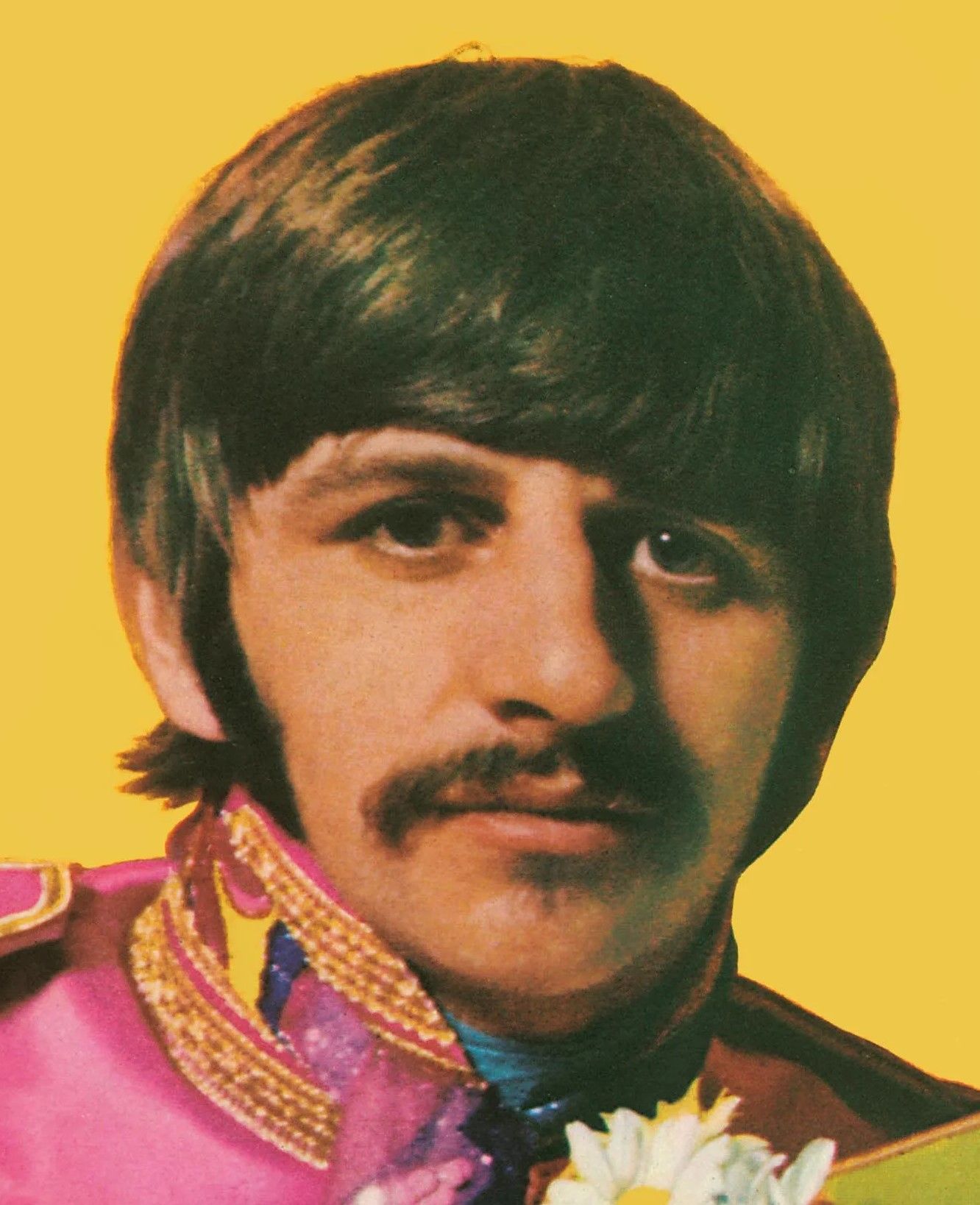 George Harrison may have been practically absent from the proceedings, but Paul certainly filled in the necessary gaps with much enthusiasm. The vibrancy of his lead guitar work surely fit the feel of the song, as did his usual intricate bass lines and experimental floor tom fills. And Ringo put in a very dominant performance on drums, putting in his random and sometimes rhythmically awkward drum fills as heard at the end. The song somehow wouldn’t come across the same without them, so our hats go off to you, Ringo! George Harrison may have been practically absent from the proceedings, but Paul certainly filled in the necessary gaps with much enthusiasm. The vibrancy of his lead guitar work surely fit the feel of the song, as did his usual intricate bass lines and experimental floor tom fills. And Ringo put in a very dominant performance on drums, putting in his random and sometimes rhythmically awkward drum fills as heard at the end. The song somehow wouldn’t come across the same without them, so our hats go off to you, Ringo!
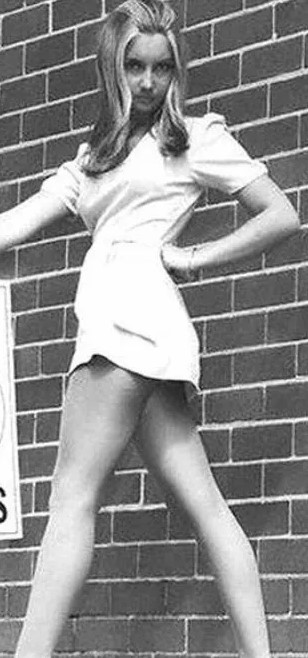 The domesticated life of John Lennon appears to have crept into the lyric writing with lines such as “call his wife in” and “how’s your boy been.” He doesn’t want to go to “work” (see recording studio) because he’s “feeling lowdown,” so he starts “to roam” until he gets to town and sees that everyone around “is half asleep” in their mindless activities and he feels 'on his own.' Since he’s got “nothing to do” he even checks out “the old school,” only to find “nothing has changed, it’s still the same.” However, his playful bachelor-like life still rears its head as if to create a distraction from his boredom, as in “watching the skirts you start to flirt…now you’re in gear!” He even appears to be looking for a liaison as he goes "to a show" and "hope she goes," this possibly being a reference to wondering if she's promiscious, as the British slang term "goes" suggests. But in the end, even though Lennon has “nothing to say,” it’s still “ok.” The domesticated life of John Lennon appears to have crept into the lyric writing with lines such as “call his wife in” and “how’s your boy been.” He doesn’t want to go to “work” (see recording studio) because he’s “feeling lowdown,” so he starts “to roam” until he gets to town and sees that everyone around “is half asleep” in their mindless activities and he feels 'on his own.' Since he’s got “nothing to do” he even checks out “the old school,” only to find “nothing has changed, it’s still the same.” However, his playful bachelor-like life still rears its head as if to create a distraction from his boredom, as in “watching the skirts you start to flirt…now you’re in gear!” He even appears to be looking for a liaison as he goes "to a show" and "hope she goes," this possibly being a reference to wondering if she's promiscious, as the British slang term "goes" suggests. But in the end, even though Lennon has “nothing to say,” it’s still “ok.”
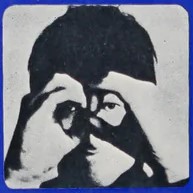 Cleverness is still woven into the lyrics at times, such as the above mentioned reference to the TV show “Meet The Wife.” We also see the tricky pronunciation in “somebody needs to know the time, glad that I’m here,” which is here purposely enunciated as “glad the time here.” It is funny how you can identify the subtle John Lennon humor when you look for it. Cleverness is still woven into the lyrics at times, such as the above mentioned reference to the TV show “Meet The Wife.” We also see the tricky pronunciation in “somebody needs to know the time, glad that I’m here,” which is here purposely enunciated as “glad the time here.” It is funny how you can identify the subtle John Lennon humor when you look for it.
American Releases
June 2nd, 1967 was the official US release date of their landmark album “Sgt. Pepper’s Lonely Hearts Club Band,” which featured “Good Morning Good Morning” midway through the second side.
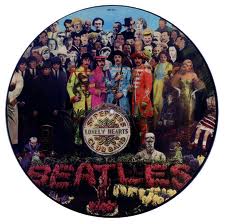 Being that the song was only considered as an album track, the only way for Beatles fans to acquire the song was on the different versions of the album re-released through the years. The initial pressings of the album on vinyl in the US were mostly in stereo, although it was printed in mono in a limited quantity and these rare copies have become quite valuable. Interestingly, a particular American stereo pressing of the album by Capitol around 1970 featured "Good Morning Good Morning" with one of the channels of the stereo mix completely missing (as was my personal copy purchased just after the breakup of the band was made public). Notable among the re-releases of the vinyl album throughout the years was the limited-edition picture disc which came out sometime in 1978 and then again on December 15th, 2017 on 180 Gram vinyl using the new Giles Martin stereo mix. Being that the song was only considered as an album track, the only way for Beatles fans to acquire the song was on the different versions of the album re-released through the years. The initial pressings of the album on vinyl in the US were mostly in stereo, although it was printed in mono in a limited quantity and these rare copies have become quite valuable. Interestingly, a particular American stereo pressing of the album by Capitol around 1970 featured "Good Morning Good Morning" with one of the channels of the stereo mix completely missing (as was my personal copy purchased just after the breakup of the band was made public). Notable among the re-releases of the vinyl album throughout the years was the limited-edition picture disc which came out sometime in 1978 and then again on December 15th, 2017 on 180 Gram vinyl using the new Giles Martin stereo mix.
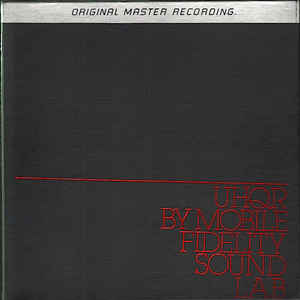 Two interesting American vinyl editions of “Sgt. Pepper” came out as "Original Master Recording" reissues produced through Mobile Fidelity Sound Lab. The first edition that was released sometime during September of 1982 (with matrix # UHQR "Ultra High Quality Recording" 1-100) listed for $40 per copy, more than five times the cost of the standard version. This release was limited to 5000 sequentially numbered copies, each vinyl disc weighing 200 grams (double the weight of conventional vinyl at that time) and were packaged between layers of protective foam rubber in a thick box. The second edition from Mobile Fidelity Sound Lab was released in June of 1983 similar to the rest of the Beatles catalog released within their series. Both of these were prepared utilizing half-speed mastering technology from the original master tape on loan from EMI. These versions of “Sgt. Pepper” were only available for a short time and are hard to find today. Two interesting American vinyl editions of “Sgt. Pepper” came out as "Original Master Recording" reissues produced through Mobile Fidelity Sound Lab. The first edition that was released sometime during September of 1982 (with matrix # UHQR "Ultra High Quality Recording" 1-100) listed for $40 per copy, more than five times the cost of the standard version. This release was limited to 5000 sequentially numbered copies, each vinyl disc weighing 200 grams (double the weight of conventional vinyl at that time) and were packaged between layers of protective foam rubber in a thick box. The second edition from Mobile Fidelity Sound Lab was released in June of 1983 similar to the rest of the Beatles catalog released within their series. Both of these were prepared utilizing half-speed mastering technology from the original master tape on loan from EMI. These versions of “Sgt. Pepper” were only available for a short time and are hard to find today.
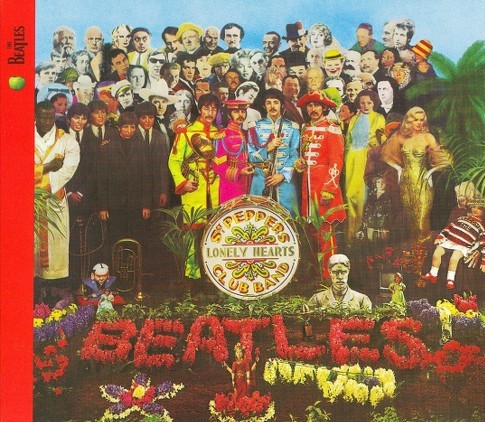 The "Sgt. Pepper" album was released on compact disc for the first time on September 21st, 1987. This CD was then remastered and re-released on September 9th, 2009. This was also the date that the ultra-rare 1967 mono mix became available on CD as part of the box set titled "The Beatles In Mono," the vinyl edition being first released on September 9th, 2014. The "Sgt. Pepper" album was released on compact disc for the first time on September 21st, 1987. This CD was then remastered and re-released on September 9th, 2009. This was also the date that the ultra-rare 1967 mono mix became available on CD as part of the box set titled "The Beatles In Mono," the vinyl edition being first released on September 9th, 2014.
Not to be forgotten is the version of the song made available on the March 18th, 1996 released compilation album “Anthology 2.” It presents "take eight" as it stood on February 16th, 1967, this consisting of only the rhythm track, Paul’s overdubbed bass and John’s initial attempt at lead vocals.
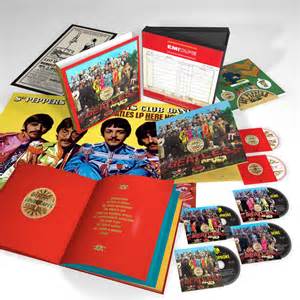 The 50th Anniversary editions of the "Sgt. Pepper" LP were released on May 26th, 2017, the excellent newly mixed stereo version allowing us to hear "Good Morning Good Morning" as we never heard it before. Apart from the original album being released on a single compact disc, a "2 CD Anniversary Edition" included the above mentioned "take eight" of the song with overdubs while the "Super Deluxe Edition" CD box set included both versions as well as "Take 1 Instrumental Breakdown." The success of this box set was astounding, reaching #4 on the US Billboard album chart, which is an amazing feat for a 50 year old album! The 50th Anniversary editions of the "Sgt. Pepper" LP were released on May 26th, 2017, the excellent newly mixed stereo version allowing us to hear "Good Morning Good Morning" as we never heard it before. Apart from the original album being released on a single compact disc, a "2 CD Anniversary Edition" included the above mentioned "take eight" of the song with overdubs while the "Super Deluxe Edition" CD box set included both versions as well as "Take 1 Instrumental Breakdown." The success of this box set was astounding, reaching #4 on the US Billboard album chart, which is an amazing feat for a 50 year old album!
Live Performances
Of course, the song was composed and recorded well past the concert stage of The Beatles’ career. No individual group member ever took on the complexity of the song in a live performance either.
Conclusion
It’s somewhat unfortunate that “Good Morning Good Morning” is overlooked as being the inventive piece of psychedelic recording ingenuity that it was. Being the “Pepper” track with the most overdubs and “bounce downs,” the dour and somewhat depressing message of the lyrics is spruced up to make it an imaginatively energetic piece of art.
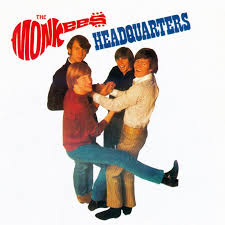 At the time of release it appears that the LP was viewed as a whole and, therefore, this track was a distinctive element of the “Pepper” experience – hence the song's appearance at the start of the final Monkees episode “Mijacogeo” (aka “The Frodis Caper”) which first aired on March 25th, 1968. As time progressed, it eventually became common practice to dissect the album "track by track," identifying favorites and also dismissing the less desirable. Hence, “A Day In The Life” has gone on to win the hearts of fans universally as the crowning element of the album, while “Good Morning Good Morning” has declined dramatically in importance. But could this pure slice of Lennon ever be omitted as a non-essential ingredient of the “Pepper” album? I think not! At the time of release it appears that the LP was viewed as a whole and, therefore, this track was a distinctive element of the “Pepper” experience – hence the song's appearance at the start of the final Monkees episode “Mijacogeo” (aka “The Frodis Caper”) which first aired on March 25th, 1968. As time progressed, it eventually became common practice to dissect the album "track by track," identifying favorites and also dismissing the less desirable. Hence, “A Day In The Life” has gone on to win the hearts of fans universally as the crowning element of the album, while “Good Morning Good Morning” has declined dramatically in importance. But could this pure slice of Lennon ever be omitted as a non-essential ingredient of the “Pepper” album? I think not!
Song Summary
“Good Morning Good Morning”
Written by: John Lennon / Paul McCartney
- Song Written: December, 1966 to January, 1967
- Song Recorded: February 8, 16, March 13, 28,29, 1967
- First US Release Date: June 2, 1967
- First US Album Release: Capitol #SMAS-2653 “Sgt. Pepper’s Lonely Hearts Club Band”
- US Single Release: n/a
- Highest Chart Position: n/a
- British Album Release: Parlophone #PCS 7027 “Sgt. Pepper’s Lonely Hearts Club Band”
- Length: 2:41 (stereo) 2:35 (mono)
- Key: A major
- Producer: George Martin
- Engineers: Geoff Emerick, Richard Lush
Instrumentation (most likely):
- John Lennon - Lead and Harmony Vocals, Rhythm Guitar (1965 Epiphone Casino ES-230TD)
- Paul McCartney - Bass Guitar (1964 Rickenbacker 4001 S), Lead Guitar (1964 Fender Esquire), Drums (1964 Ludwig Super Classic Black Oyster Pearl), Background Vocals
- Ringo Starr - Drums (1964 Ludwig Super Classic Black Oyster Pearl)
- George Harrison - Tambourine
- Barrie Cameron - Saxophone
- David Glyde - Saxophone
- Alan Holmes - Saxophone
- John Lee - Trombone
- Griff West or A.N. Other (?) - Trombone
- Tom (?) - French Horn
Written and compiled by Dave Rybaczewski
|
IF YOU WOULD LIKE TO MAKE A DONATION TO KEEP THIS WEBSITE UP AND RUNNING, PLEASE CLICK BELOW!
|